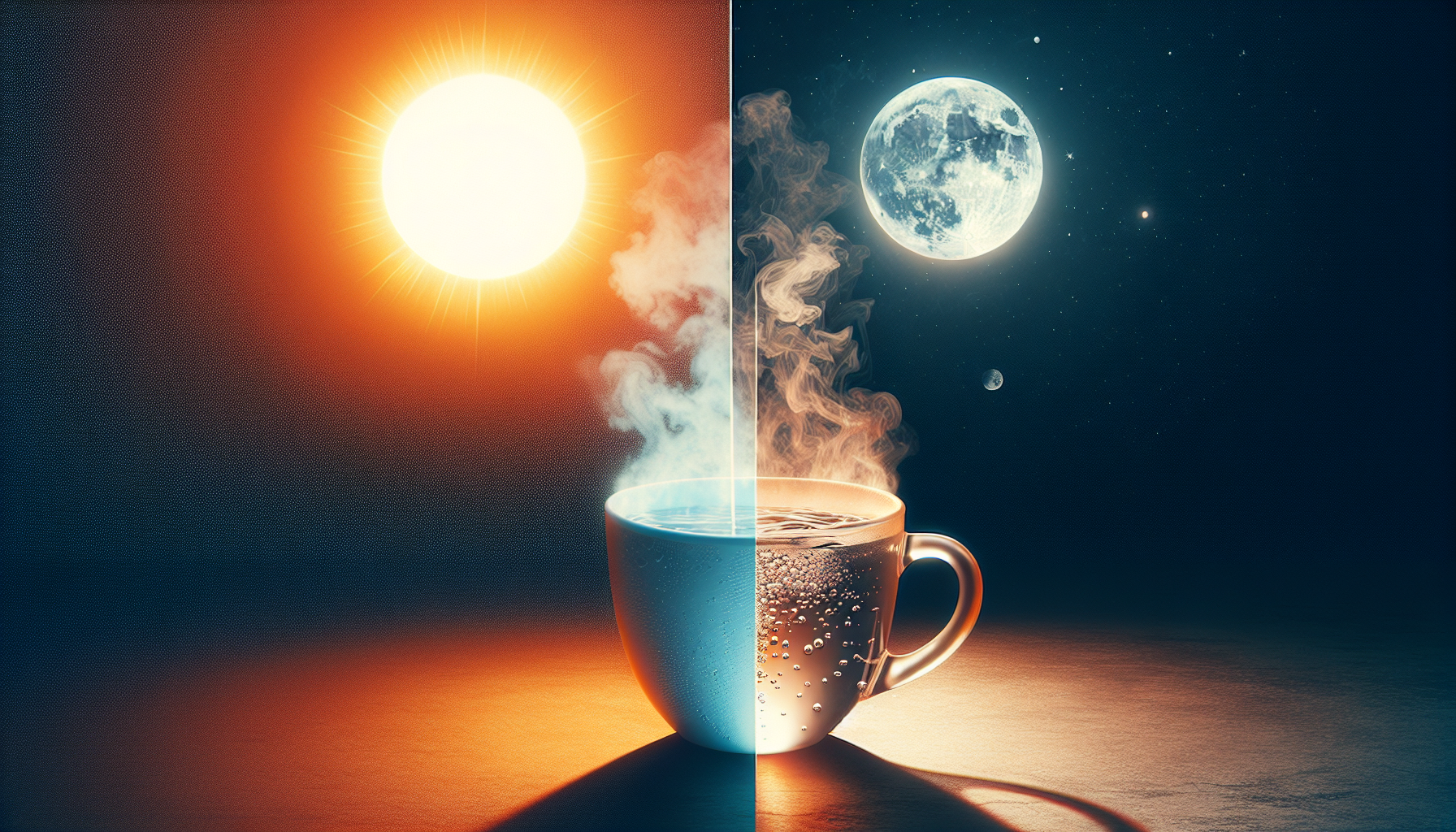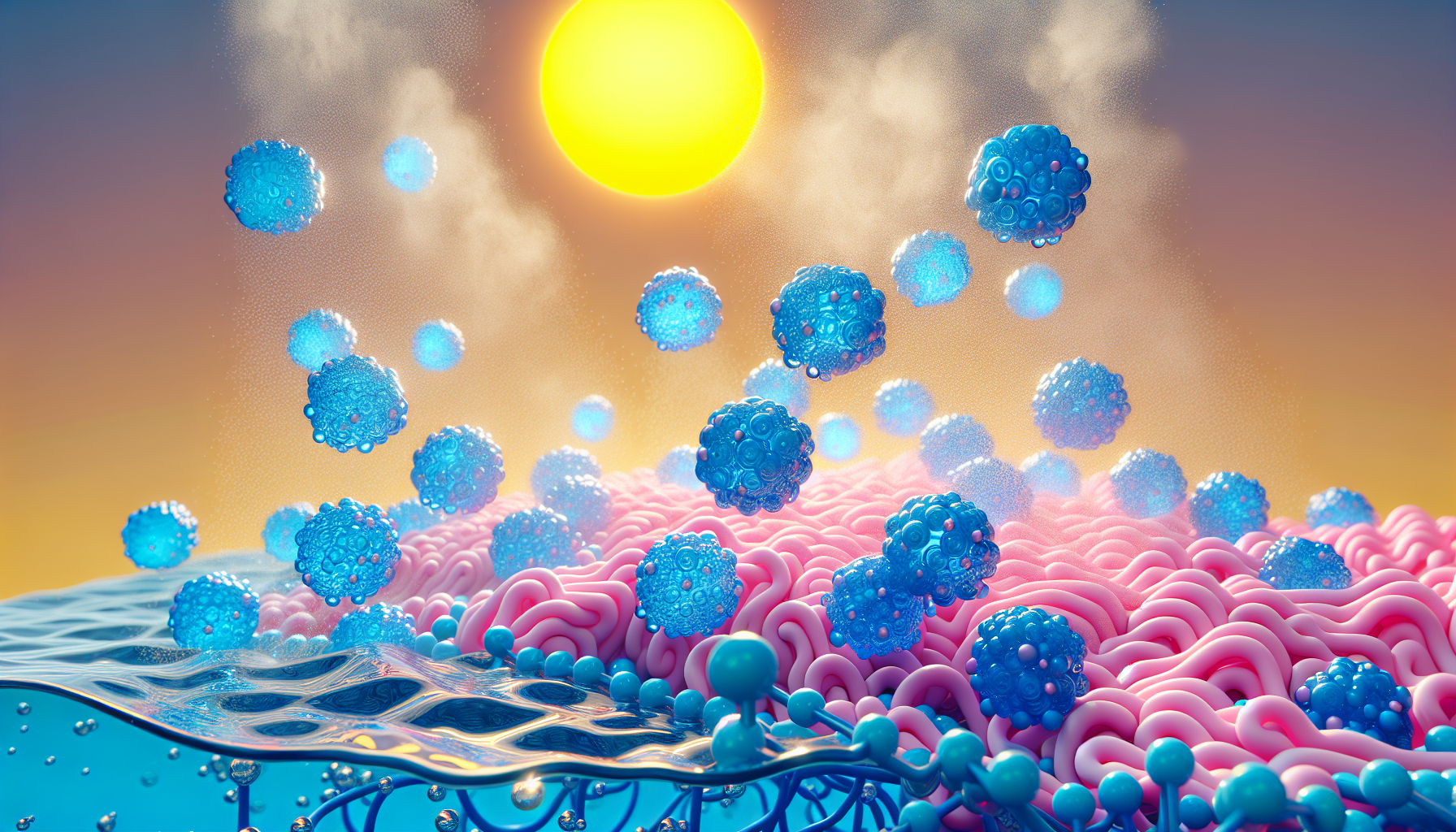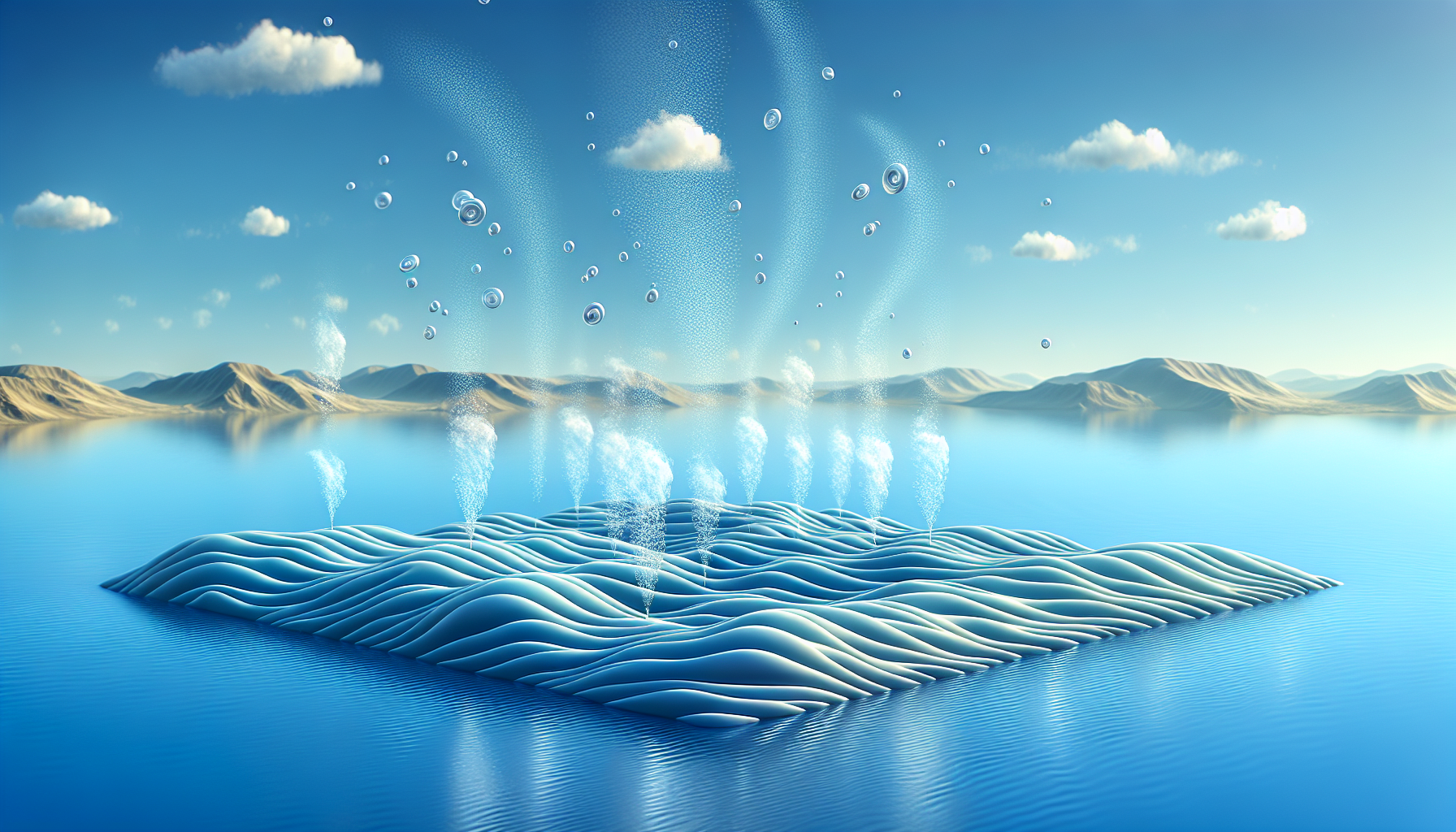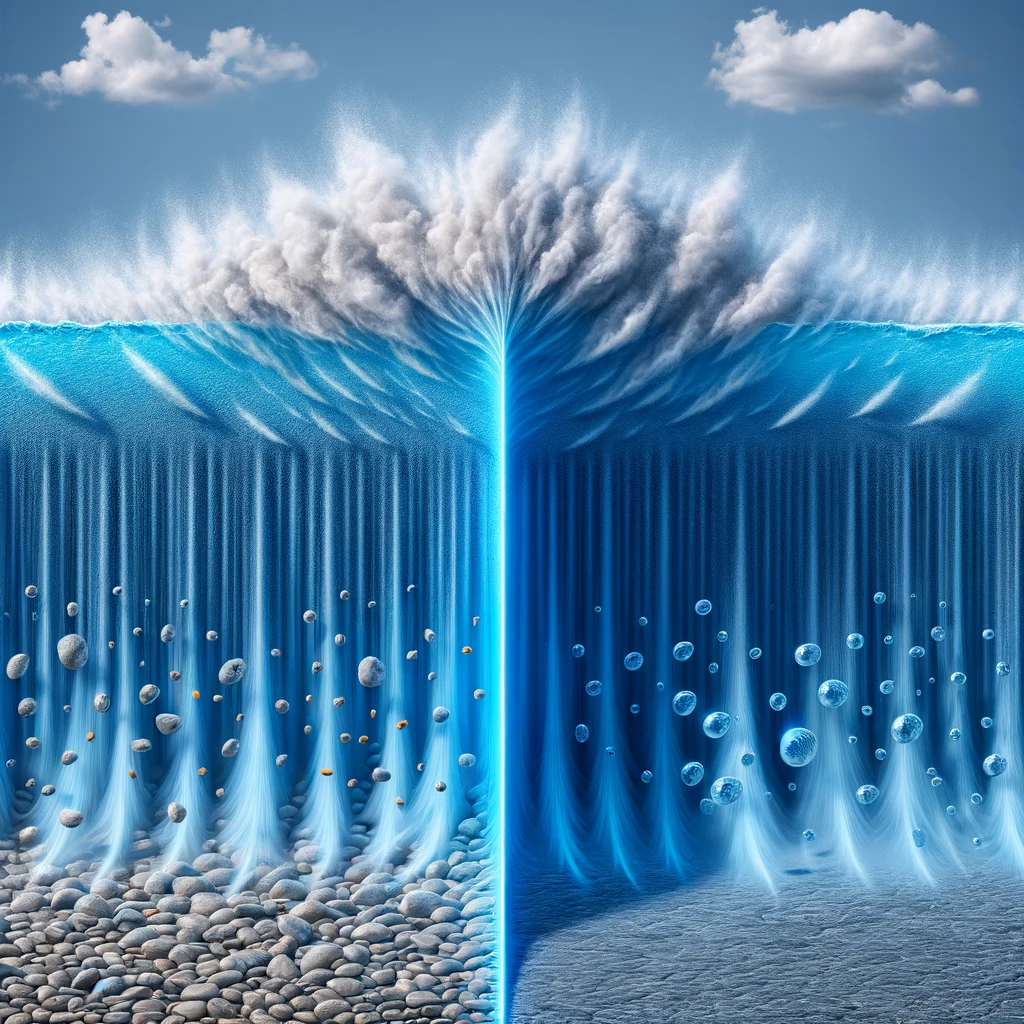What makes water dry quickly? It’s an essential question for anyone trying to dry clothes on a line or clean up a spill. In this article, we address the key factors that influence evaporation rates: heat energy, air flow, humidity levels, and surface characteristics. Without getting too technical, we will explore how you can use this knowledge to dry water more effectively in everyday situations.
Key Takeaways
-
Evaporation is driven by factors like heat energy, atmospheric pressure, and the vapor pressure of water, with higher temperatures and lower air pressures typically speeding up the rate of evaporation.
-
The drying process is significantly impacted by humidity, where lower humidity allows for faster evaporation, while high relative humidity hampers the drying because the air cannot hold more moisture.
-
Physical attributes such as wind, airflow, surface area, and material absorption properties are critical in determining the drying rates, with larger surface areas and high air circulation boosting evaporation.
The Science of Evaporation: Understanding the Basics

Evaporation is the fascinating process where liquid water transforms into water vapor and escapes into the atmosphere. This process, powered by solar energy, is a fundamental part of the water cycle. The sun’s latent heating of Earth’s atmosphere drives the evaporation of water from oceans, lakes, and soil, and is critical to the formation of water vapor and clouds.
Heat Energy and Water Molecule Dynamics
Let’s examine the behavior of water molecules more closely. When heat energy is applied, these molecules start to move faster, bumping into each other more often and with more force. This increased kinetic energy enables them to break free from their liquid state and escape into the air as water vapor.
The introduction of heat not only speeds up the movement of water molecules but also increases the distance between them, both of which are integral to the process of evaporation.
The Transition from Liquid Water to Water Vapor
Transforming liquid water to water vapor involves more than just warming it up. Atmospheric pressure plays a significant role too. At sea level, water boils at 100°C, but at higher altitudes where pressure is lower, water boils at lower temperatures.
High air pressure on the surface of water makes it more difficult for water molecules to escape into the atmosphere as vapor, affecting the rate of evaporation.
Factors Influencing the Rate of Evaporation
The rate of evaporation is determined not only by heat and pressure, but by a myriad of other factors as well. Higher temperatures increase the kinetic energy of water molecules, leading to faster evaporation rates. But the capacity of air to hold water vapor also plays a role. When air is saturated with substances, there’s less room for water vapor, which slows down evaporation.
The vapor pressure of water is crucial in determining how much water vapor the air can hold, thereby affecting the rate of evaporation.
The Impact of Temperature on Drying

Temperature significantly impacts the drying process. It’s a straightforward fact: hot water evaporates faster than cold water. As temperature rises, the space between water molecules increases, enabling a faster evaporation process. When water is heated up to the boiling point, it evaporates quickly into steam due to the high energy content of the water molecules at this temperature.
Conversely, in cooler air, water dries more slowly because the water molecules possess lower kinetic energy, which hinders their ability to break free from the liquid’s intermolecular forces.
Hot Water and Its Quick Evaporation
What factors contribute to the rapid evaporation of hot water? It’s all about the proportion of its molecules having the energy required to escape and vaporize. This phenomenon, known as the Boltzmann Distribution, states that the increased molecular activity in hot water allows more molecules to overcome the ambient pressure and break free to become vapor.
The Role of Air Temperature in Evaporation Speed
The evaporation rate of water is also largely influenced by air temperature. Higher air temperatures provide more energy to water molecules, speeding up their transition from liquid to gas. As air temperature increases, the rate of evaporation also increases, leading to a greater net evaporation.
Therefore, to enhance drying, especially in high humidity environments, increasing the temperature can be an effective strategy.
Cold Conditions and Slower Drying
Conversely, lower air temperatures decrease the vapor pressure of water, leading to a decrease in the rate at which water molecules escape into the air as vapor. Warmer air can hold a higher concentration of water vapor compared to colder air, meaning that cold air has less capacity for additional vapor before reaching saturation.
Evaporation can still occur at cold temperatures, such as 0 degrees Celsius, where vapor pressure is low but not zero, indicating a slower evaporation rate.
Humidity: The Invisible Hand in Water Drying

Humidity, although often overlooked, significantly impacts the drying process. Relative humidity is a measure of how close the condensation rate is to the evaporation rate. At 100 percent relative humidity, the condensation rate equals the evaporation rate, indicating the air is at saturation and can hold no more water vapor, thereby slowing the drying process.
The rate of evaporation decreases as the humidity of the surrounding atmosphere increases due to the reduced capacity of air to hold additional water vapor.
Dry Air vs. Humid Air: A Comparison
Dry air, capable of absorbing more moisture, facilitates a quicker evaporation of water from surfaces. When humidity in the air reaches 100 percent, it becomes saturated, preventing further evaporation as the air cannot hold additional water vapor. In conditions of high humidity, the rate of condensation is close to the rate of evaporation, which diminishes the overall net evaporation, thereby slowing the water dry process.
The effectiveness of evaporation is enhanced in an environment with low relative humidity, as dry air promotes a higher rate of water transitioning into vapor.
Measuring Humidity’s Effect on Drying Time
How can we quantify the impact of humidity on drying time? Percent relative humidity is defined as the ratio of vapor density to saturation vapor density, multiplied by 100. Hygrometers are instruments specifically designed to measure the relative humidity of the air. Relative humidity can be indirectly deduced by analyzing dew point and temperature, key indicators of condensation and evaporation rates.
While the precise evaporation and condensation rates are complex to pinpoint, their dynamics with temperature and dew point offer insights into drying times under varying humidity levels.
Strategies to Overcome High Humidity
What strategies can be employed to enhance the drying process in high humidity conditions? There are several strategies to reduce interior humidity levels:
-
Dehumidifiers: highly effective for removing excess moisture from the air in spaces with elevated humidity.
-
Using desiccants: can lower the vapor density in the air, facilitating a quicker evaporation rate of water in humid conditions.
-
Managing indoor plants correctly or positioning them outdoors: can decrease the moisture they add to the air.
From small home repairs to drying laundry outside, there are numerous ways to tackle high humidity.
Wind and Airflow: The Accelerators of Evaporation

Wind and airflow play a significant yet often overlooked role in evaporation. Moving air across a body of water increases the evaporation rate by removing water vapor close to the surface, thereby reducing the local humidity and allowing more water to evaporate. But when air reaches 100% relative humidity, becoming saturated with water vapor, increasing wind speed does not enhance evaporation since the air cannot hold additional moisture.
Nevertheless, in hot, dry, and windy environments, the evaporation rate is elevated because higher temperatures lower the amount of energy required for water to evaporate, and wind assists by removing saturated air.
How Moving Air Aids in Water Evaporating
Increased air circulation or wind speed can augment the rate of evaporation by displacing humid air from the surface and replacing it with drier air, which can absorb more water vapor. Moving air has a lower pressure than static air, which when blown over a hot wet surface creates an area of lower pressure, facilitating water to transition more readily to gaseous form.
Natural vs. Artificial Air Movement
Air movement can be categorized into two types: natural and artificial. Natural ventilation makes use of the stack effect to move air due to pressure differentials, facilitating air circulation without mechanical aid. While this method is energy-efficient and can effectively circulate fresh air, it is less effective in conditions of extreme temperatures or humidity.
Here, artificial or mechanical systems step in, controlling environmental conditions by removing warm, moist surrounding air and replacing it with cooler, drier air.
Optimizing Conditions for Maximum Evaporation
To optimize evaporation, balancing airflow speed with the temperature is key. Too much airflow can decrease the air’s temperature, potentially lowering evaporation rates. Testing different rates of airflow and temperatures is crucial to identify the most efficient evaporation conditions, taking into account factors such as energy consumption, noise, and cost.
Surface Area and Material: The Physical Aspects of Drying

Let’s turn our attention to the physical attributes that influence drying. The surface area and material properties of an object play crucial roles in the drying process.
Evaporation increases proportionally with the exposed surface area, resulting in faster drying times for larger surface areas.
Why a Larger Surface Area Means Faster Drying
Since evaporation primarily occurs on the surface, the rate of water evaporation amplifies with the extent of surface area exposed to the process. Larger surface areas enable a faster moisture release since they allow more water molecules to evaporate at the same time.
As evaporation occurs from the top layer of the liquid, more water molecules are able to gain the necessary energy to transition into vapor when a larger surface is exposed to heat, leading to a quicker drying process.
Absorbent vs. Non-Absorbent Materials
The nature of the material also plays a role in determining drying times. Absorbent materials, like sponges and towels, have tiny holes that draw in liquid and allow it to spread throughout the material, slowing down the surface drying process.
On the other hand, non-absorbent materials like raincoats and certain plastics repel water, causing the liquid to bead up on the surface, which can lead to faster drying as the water is not absorbed into the material, preventing the formation of a small puddle.
Practical Examples: Towels, Clothes, and Land
For instance, ponder on the texture of a towel fabric to grasp these concepts better. Its bulky and textured surface provides a larger surface area that allows for faster drying due to increased water absorption. A bath towel measuring 100 cm x 150 cm with a 5 mm thickness, provides a surface area of 90,000 sq. cm, demonstrating how each square meter of towel offers over six square meters of surface area for evaporation.
The capillary mechanism in towels facilitates the movement of water through the fibers, aiding in water absorption and contributing to the efficiency of the drying process.
External Conditions and Their Influence on Drying
The drying process is significantly affected by various environmental factors. Some of these factors include:
-
Mechanical ventilation systems, such as air conditioners, control environmental conditions by removing warm, moist air and replacing it with cooler, drier air.
-
Temperature fluctuations can affect the drying rate.
-
Sunlight exposure can also impact the drying rate and can affect the integrity of materials such as fabrics by affecting their susceptibility to mold.
The Warming Power of Sunlight
Sunlight plays a pivotal role in the drying process. Solar energy from the sun is essential to the evaporation process, providing the necessary heat to convert water into vapor. The rate of evaporation increases under sunny and warm weather conditions due to the greater heat energy available from direct sunlight.
Warm air over warm water creates the most favorable conditions for rapid evaporation, often resulting from sunlight heating the water’s surface.
Shade and Cooler Temperatures: Slowing Down the Process
Conversely, shade and lower temperatures can decelerate the drying process. Creating shaded conditions over water bodies limits the amount of heat energy reaching the water surface, slowing down evaporation. In fact, a single layer cover, such as palm fronds, can reduce evaporation by about 47%, while a double layer can increase the reduction to approximately 58%.
Adapting to Environmental Changes
What occurs when there are shifts in environmental conditions? Adaptability is key. For instance, seed drying is crucial for:
-
improving food quality
-
preventing pest and fungal growth
-
minimizing post-harvest losses
-
reducing resource waste.
By understanding and adapting to the varying environmental conditions, we can optimize the drying process to get the best results.
Summary
What a fascinating journey we’ve been on! We’ve explored the science behind evaporation and drying, delving into the roles of heat energy, humidity, wind, surface area, material properties, and environmental factors. We’ve seen how these elements interact in complex ways to influence the rate at which water evaporates and dries. By understanding these factors, we can better manage and optimize drying processes, whether it’s drying our laundry, preserving food, or managing water resources. The science behind drying isn’t just fascinating – it’s also incredibly practical and relevant to our daily lives.
Frequently Asked Questions
What makes water dry faster?
Heating water causes the molecules to move faster, leading to quicker evaporation, which makes it dry faster. This is why there is more evaporation from hot water compared to cold water.
What causes water to dry up?
Water dries up due to evaporation, which occurs when liquid water turns into a gas, known as water vapor. This is a key step in the water cycle.
How does heat energy affect the rate of evaporation?
Heat energy increases the movement and kinetic energy of water molecules, enabling them to transition from a liquid state to water vapor and evaporate.
How does humidity impact the drying process?
High humidity can slow down drying by saturating the air with water vapor.
[/et_pb_text][/et_pb_column][/et_pb_row][/et_pb_section]



